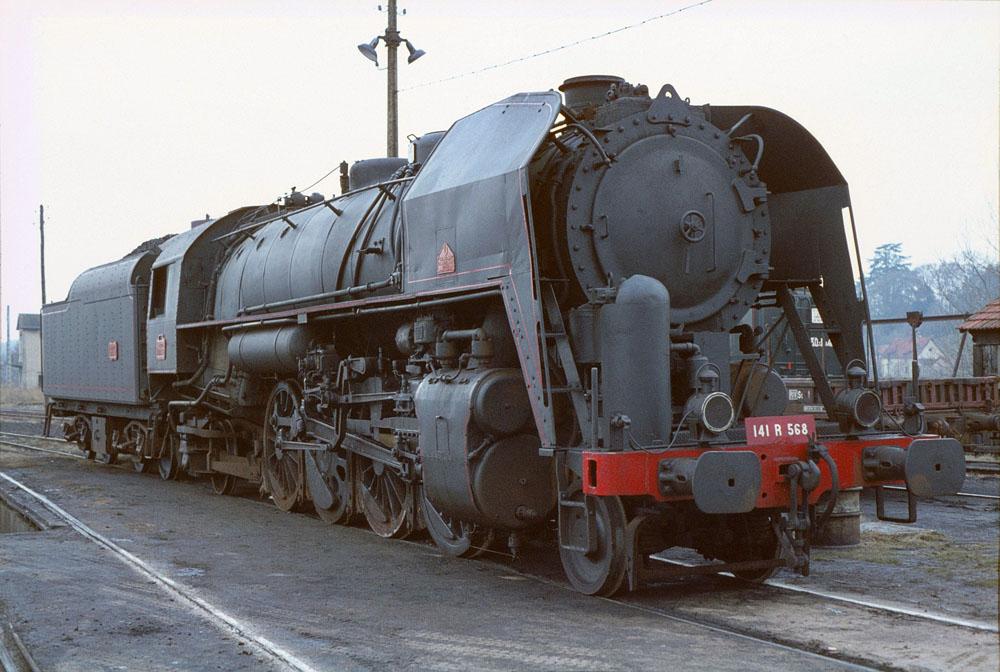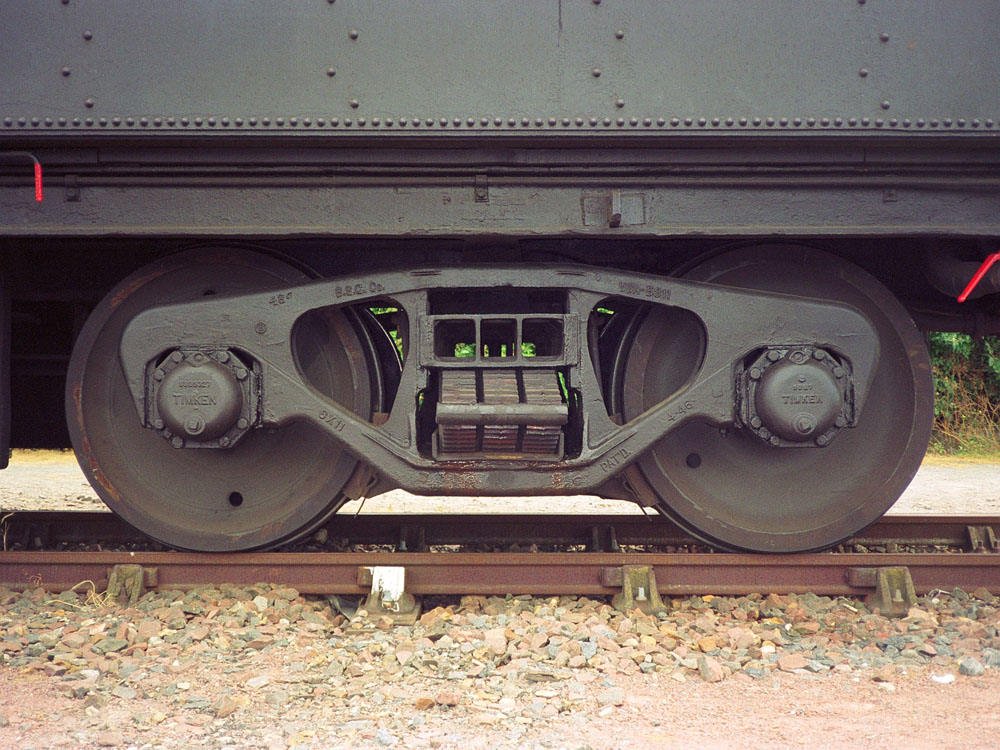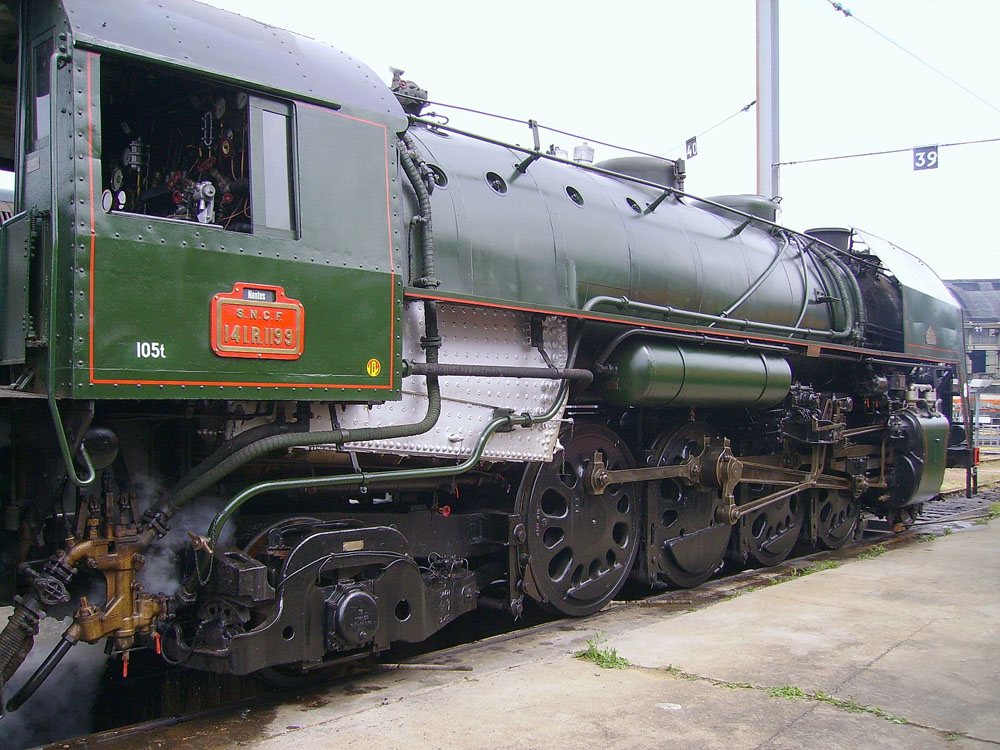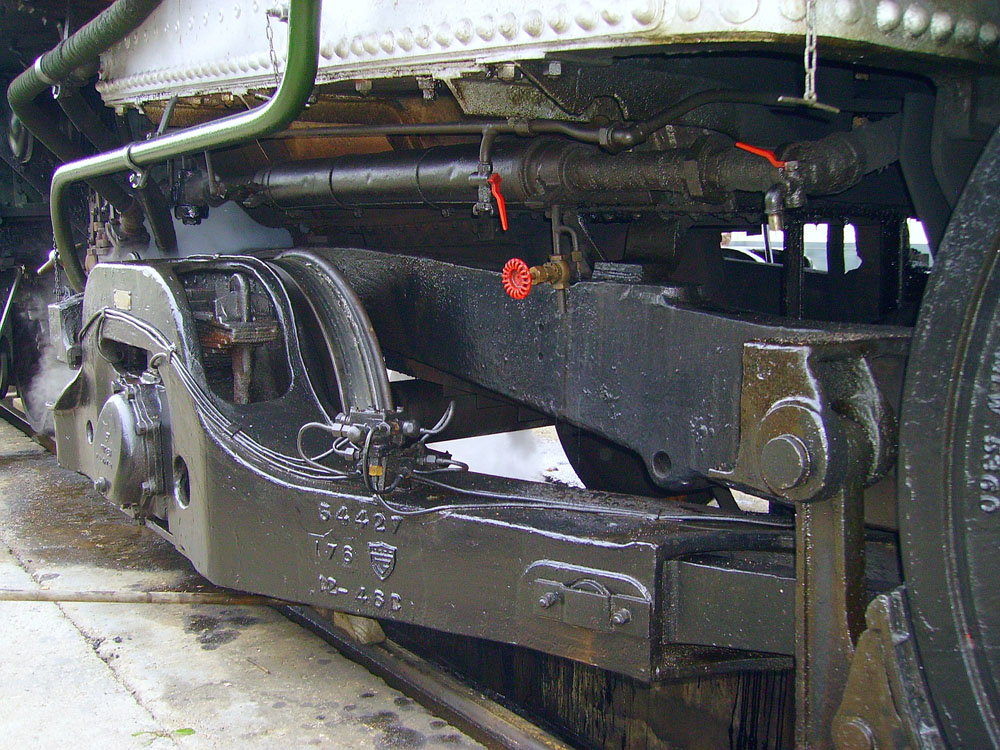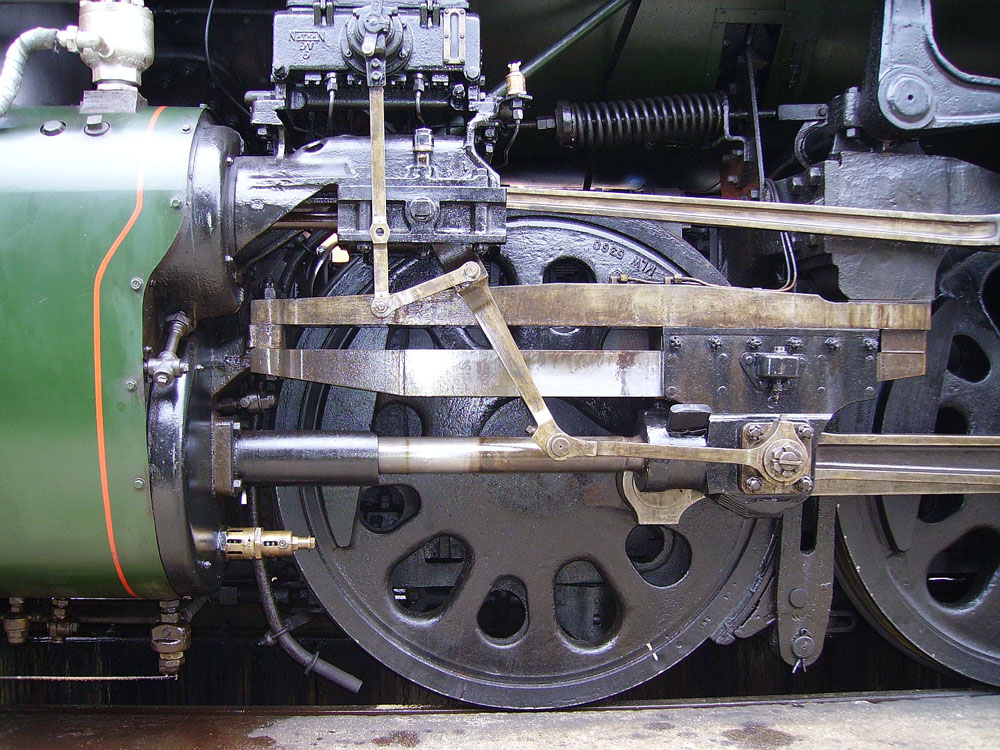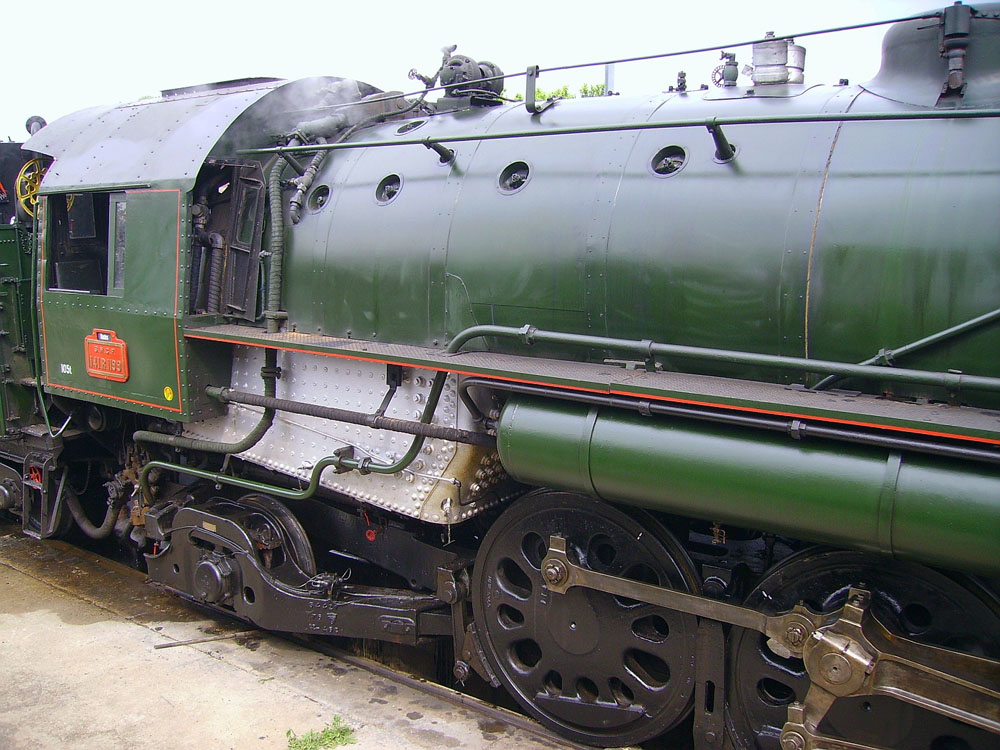While we have mentioned the Lempor in some of our White Papers, and we will focus a new White Paper specifically on exhaust systems in the near future, the CSR Team thought it might be helpful to give some insights into the physics given that both Grand Canyon Railway steam locomotives No. 29 and No. 4960 are now back in service and that both have Lempor Exhausts designed by Nigel Day.
This video, courtesy of Chris Zahrt, shows GCRy No. 29 hustling a train under stormy skies. The 1906-built 2-8-0 burns used vegetable oil and employs a Lempor Exhaust to use steam as efficiently as possible within the constraints of the historic locomotive.
Understanding drafting in steam locomotives starts in the cylinder at the point of release [C on the following diagram]. This is when the valve first opens to let exhaust steam out of the cylinder. The pressure in the cylinder at release depends largely on the cutoff selected. A long cutoff means that the cylinder has been filled with near-boiler pressure steam for the majority of the stroke, which prevents the steam from expanding much before exhaust, therefore leading to a higher pressure at release. A short cutoff allows steam to enter the cylinder for a shorter percentage of the stroke, providing a proportionately longer percentage of the stroke for the steam to expand and, thus, exhausting with a lower pressure. Regardless of the pressure at the release point, the steam pressure in the cylinder drops quickly as the steam flows out and fills the exhaust steam passages [E]. The pressure at the cylinder exit [C] will eventually stabilize to a level determined by the total cross-sectional area of the exhaust nozzle(s) and the mass flowrate of steam. This stabilized pressure is known as "back pressure."
CLICK TO ENLARGE This diagram compares a "Normal" U.S. exhaust nozzle system with the advanced "Lempor" system, as equipped on GCRy Nos. 29 and 4960. Both types share similar components of: 1) Branch Pipes [live steam]; 2) Valves [live and exhaust stem]; 3) Piston [live and exhaust steam]; and 4) Exhaust passage. Where they differ is the design of: 4A/4B) the exhaust paths; 5A/5B) the type of nozzle; 6A/6B) the design of the petticoat; and 7A/7B) the refinement in design of the stack.
Between the cylinder [3 in the diagram above] and the exhaust nozzle [5A], some of the energy left in the steam will be lost due to factors such as: passages being too small; turns being too sharp; sudden changes in passage size; passages walls being too rough; or excessive heat loss due to design / lack of insulation. In some very poorly designed locomotives, the exhaust passages can be joined in ways such that the exhaust pressure pulse from one side of the cylinder can be "seen" by the opposite cylinder which creates an artificially higher back pressure [as exhibited above near the number 4A].
Bernoulli's equation helps us understand the relationship of pressure and velocity in fluid flows. Without delving too deeply into the details, the equation tells us that a high speed flow equates to a lower pressure and a low speed flow leads to higher pressure. Taking a look at the locomotive exhaust nozzle [5A], the idea is to transfer the "pressure energy" of the steam into velocity to create a low pressure region just outside the nozzle which will suck the exhaust gasses from the firebox through the flues. For a given back pressure, a smaller nozzle opening (aka "cross-sectional area") will give a higher velocity flow and, thus, a strong draft on the fire. However, that back pressure may become high enough to start limiting the power that can be produced in the cylinders. This is exhibited in the relationship between the difference in pressure going in and going out of the cylinders.
Normally, to get more power, one would simply increase the cross-sectional area of the nozzle opening, lowering the back pressure at the same cylinder inlet pressure and cutoff. While this may increase power, it decreases the velocity of steam exiting the nozzle and, in turn, also decreases the draft acting on the fire and drawing hot gasses through the boiler. The result would be a poorly-drafting locomotive that would have difficulty making steam to meet the improved power from the cylinders.
Whereas the above describes a traditional single nozzle exhaust, a Lempor nozzle splits the total steam flow between four separate, smaller nozzles [5B]. Assume that the total cross-sectional opening for the four Lempor nozzles is the same as a single nozzle [5A]. Under the same inlet pressure and other conditions, the local speed of the steam jet exiting the smaller openings of the four nozzles will be a fair bit higher that that of the single, larger nozzle, simply because of the relationship between opening size and velocity. This creates a stronger draft with the same back pressure. The steam locomotive designer now has more options for finding an optimal balance between cylinder power and draft.
Steam locomotive mechanical engineer L.D. Porta also introduced a converging-diverging, or DeLaval, nozzle to steam locomotive design [5B]. In all other steam locomotive exhaust nozzles that we are aware of prior to his application, the exit walls were essentially parallel to the direction of steam flow. Under subsonic conditions, the converging or narrowing section works to speed up the flow. Once the flow reaches choked conditions, basically a velocity of Mach 1, no further acceleration can be obtained and thus no more improvement in draft. The diverging, or widening, portion of the nozzle under subsonic conditions actually serves to slow down the flow and increase the pressure. However, things flip-flop once the flow goes supersonic and by allowing the nozzle to widen to the outlet, the steam jet can continue to accelerate leading to draft improvement.
The multiple nozzles also help with mixing of the steam and flue gas as they lead to more surface area of steam at high velocity in contact with the flue gas. [Note that without good mixing of the two streams, the flue gas would mostly just stay in the smokebox instead of exiting the stack and its velocity through the flues and tubes would be much lower, resulting in poor heat transfer and thus poor steaming.] While mixing takes place as soon as the steam exits the nozzle, the first section of the petticoat [6B] is specifically thought of as a mixing chamber and its proportions in concert with those of the nozzles help assure good mixing/momentum transfer from the high velocity steam to the lower velocity flue gas.
Once mixed, the steam and flue gas is in the subsonic flow region but still has a fair bit of energy left and is still flowing at a fairly high velocity. If it was just allowed to go up a straight stack to the atmosphere [7A], that energy would be lost. Therefore, the latter part of the Lempor petticoat widens out [7B], which slows the flow and increases its pressure back to that of atmospheric. This characteristic, widening stack can be seen in the diagram of No. 29 below.
As in much of fluid mechanics, it takes very careful calculation and proportioning to maximize the benefit of the system which can be significant compared to other known exhausts. Failure to do so, either through poor engineering or when physical or other constraints restrict the designer's ability to implement a properly sized system will lead to a poor performing product.
Upcoming White Paper
The CSR Team is working on a White Paper dedicated to the development of advanced steam exhaust systems, from the traditional U.S. designs through Chapelon to Giesel and Lempor. Expect more information on that in the coming month. To stay up to date on CSR, consider signing up for our email list at the bottom of this page.

![The "Stripe" with a few of the NSPS folks in front of its 70" driving wheels. From left to right: Jim Wrinn [Editor of Trains Magazine & NSPS Board Member], Shane Meador [NSPS President], Jason Sobzynski [Steam Mechanic and NSPS Advisor] and Dav…](https://images.squarespace-cdn.com/content/v1/55e5ef3fe4b0d3b9ddaa5954/1461538218067-XKVQMYFCQOX6L30B8FKX/image-asset.jpeg)



